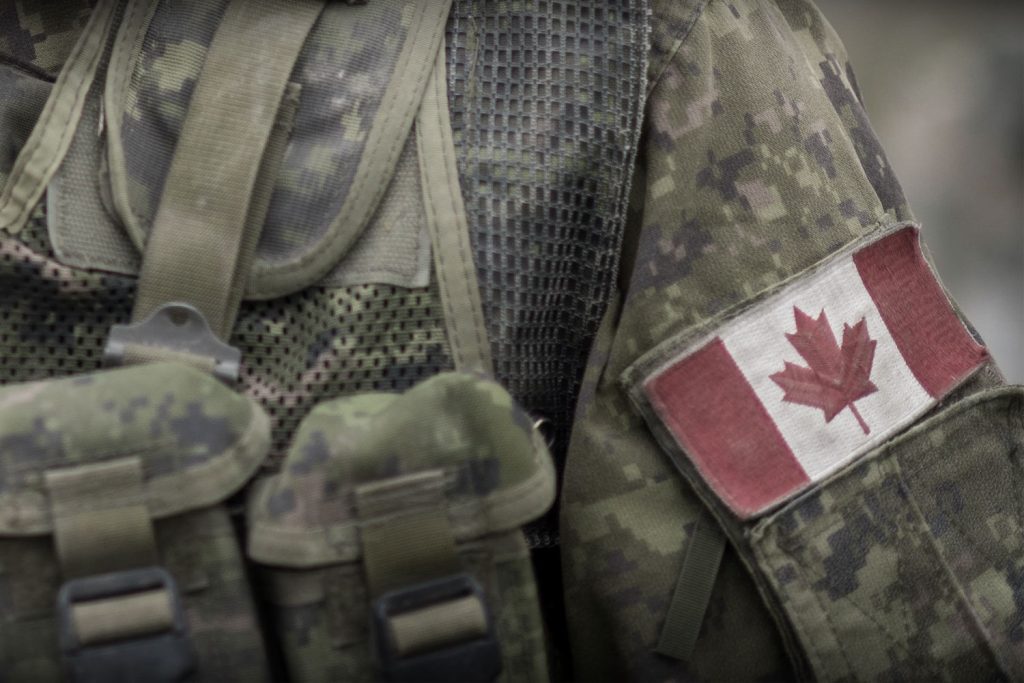
When Statistics Canada published the results from the 2022 Survey of Sexual Misconduct in the Canadian Armed Forces in December 2023, the report’s insights were gloomy. Out of the vast amount of information shared from the survey, however, one stat in particular stood out: the rate of sexual assault in the CAF had more than doubled.
Collecting voluntary responses from some 1,960 regular force members from October 2022 to January 2023 as part of the military’s continuing mission to monitor and address sexual misconduct, StatCan found that the rate of sexual assaults was 3.5 per cent in 2022. In previous surveys, conducted in 2016 and 2018, the rate hovered at just about 1.5 per cent. What’s more, the rate of reported sexual assaults was down from 2018, with only one in five members disclosing such misconduct. The low rate apparently stems from victims believing that revealing such incidents wouldn’t make any difference, an opinion that was more widely noted in the recent survey than in previous ones.
“It is very disheartening,” said senator and veteran Rebecca Patterson to Legion Magazine. “I wish things were better in this last survey. I mean, who doesn’t?”
Such figures paint a shadowy picture of the CAF, especially since numerous policies and programs have been introduced since 2014, including the now-defunct Operation Honour and the current Path to Dignity and Respect, to help reduce, and bring awareness of, sexual misconduct in the military. But, according to one author of the report, these numbers aren’t entirely representative of the survey’s data.
The majority of military personnel believe that those who commit sexual misconduct are held accountable.
“The results from the survey do suggest that the CAF’s programs seem to be working incrementally since the first time we did the survey in 2016,” said StatCan analyst Adam Cotter. “And a lot of the things that we found in 2022 are very similar to what we find among the civilian population.”
As is the case with most studies, the survey’s complexity can’t easily be captured in a headline.
In the survey, sexual misconduct was classified into five categories: inappropriate verbal and non-verbal communication; behaviours involving sexually explicit materials; unwanted physical contact or suggested sexual relations; discrimination on the basis of sex or gender; and discrimination on the basis of sexual orientation or gender identity. Based on regular force member responses, the report found that the most common misconduct was unwanted sexual touching—and it occurred more often among those who were younger, Indigenous, disabled or not heterosexual.
“It’s not a surprise; it is heartbreaking,” said Patterson, commenting on the survey’s most affected demographics. “It is consistent with civilian society and, of course, is unacceptable.”
These results were compounded by lower rates of reporting and a higher frequency of members believing that disclosure wouldn’t make a difference. Additionally, 48 per cent of respondents were dissatisfied with the responses from authorities. And 66 per cent of those who made reports said they faced some nature of negative consequence as a result, the most common being exclusion, bullying or teasing. Other consequences, not directly associated with revealing sexual misconduct, included greater feelings of anxiety and depression, negative reactions of victims’ families and increased consumption of alcohol or drugs. And, as is typical in civilian populations, only a minority of victims made use of services to address the impacts of their experiences.
There was progress, however, in some areas. For example, just 67 per cent of regular force members reporting seeing, hearing or experiencing sexualized or discriminatory behaviour such as sexual jokes in the previous 12 months, a drop from 70 per cent in 2019 and 80 per cent in 2016. The report also noted that the higher rate of sexual assault might be attributable to a larger segment of personnel seeing sexualized or discriminatory behaviour as more problematic than before, which could stem from a greater understanding of appropriate workplace behaviour.
The efficacy of the CAF’s sexual misconduct programs, however, is best illustrated by the proportion of those who intervened when witnessing sexualized or discriminatory behaviours, a rate that increased in every behavioural category in 2022. Where inappropriate communication and prejudice arose, women were more likely to act than men.
“I actually think that the fact that people are even acknowledging that this has occurred to them, that you still have bystanders intervening,” said Patterson, “[shows] that there is an incredible sensitivity to this.”
Promisingly, the majority of miliary personnel believe that those who commit sexual misconduct are held accountable, with 66 per cent strongly or somewhat agreeing. Moreover, nearly all respondents (96 per cent) indicated there was zero place for sexual misconduct in their unit.
Most impressively, 75 per cent strongly or somewhat agreed that the culture surrounding sexual misconduct had improved since joining the military.
The report noted that numerous factors could have impacted the results, such as alterations in terminology (i.e., changing “sexual behaviour” to “sexual misconduct” in survey questions) and cultural shifts. Similarly, the Defence Department’s newer policies, such as repealing the duty to report and the continual transition of sexual offences from the military to the civilian justice system, may affect its future results.
Still, Patterson pointed to the bigger meaning of the surveys.
“Do I think great work has been done? I absolutely do. That message always gets lost,” she said. “Show me another institution in Canada that has done surveys in this depth over this period of time.
“The vast majority of members of the Canadian Armed Forces want nothing but the best for the people that they work with.”
Advertisement


















